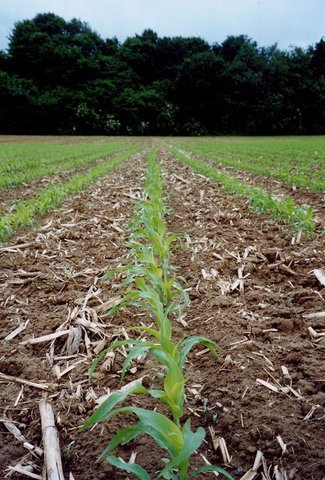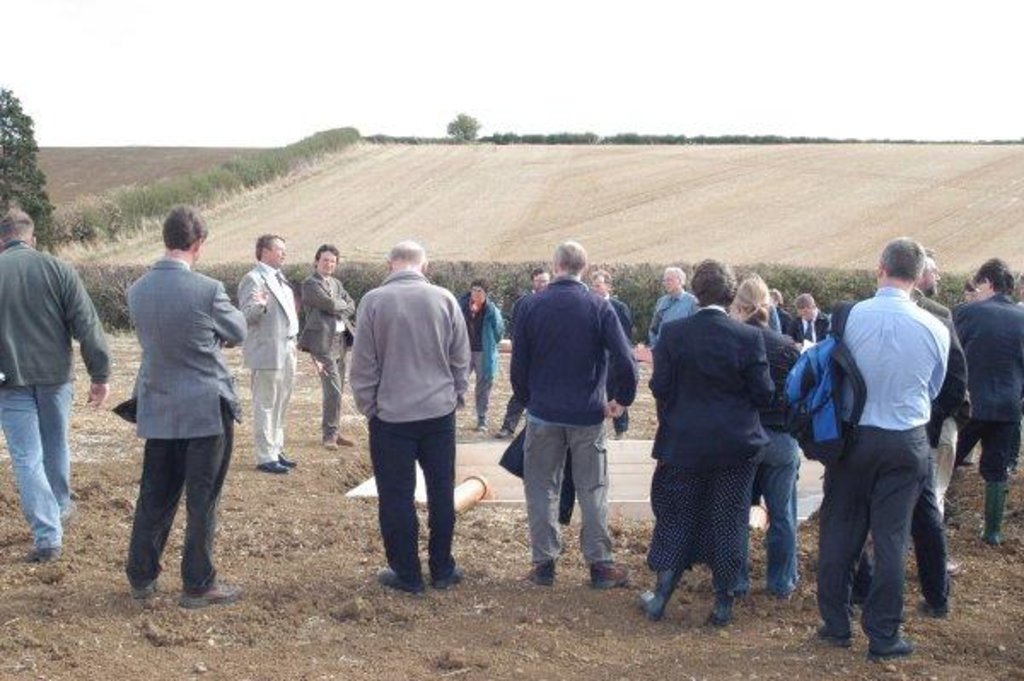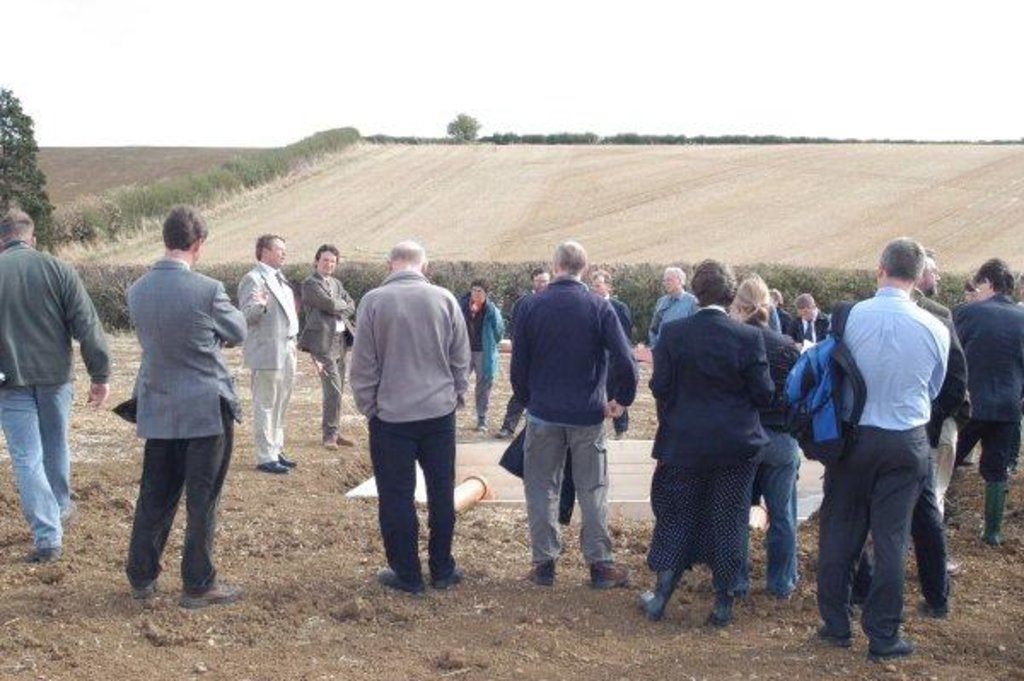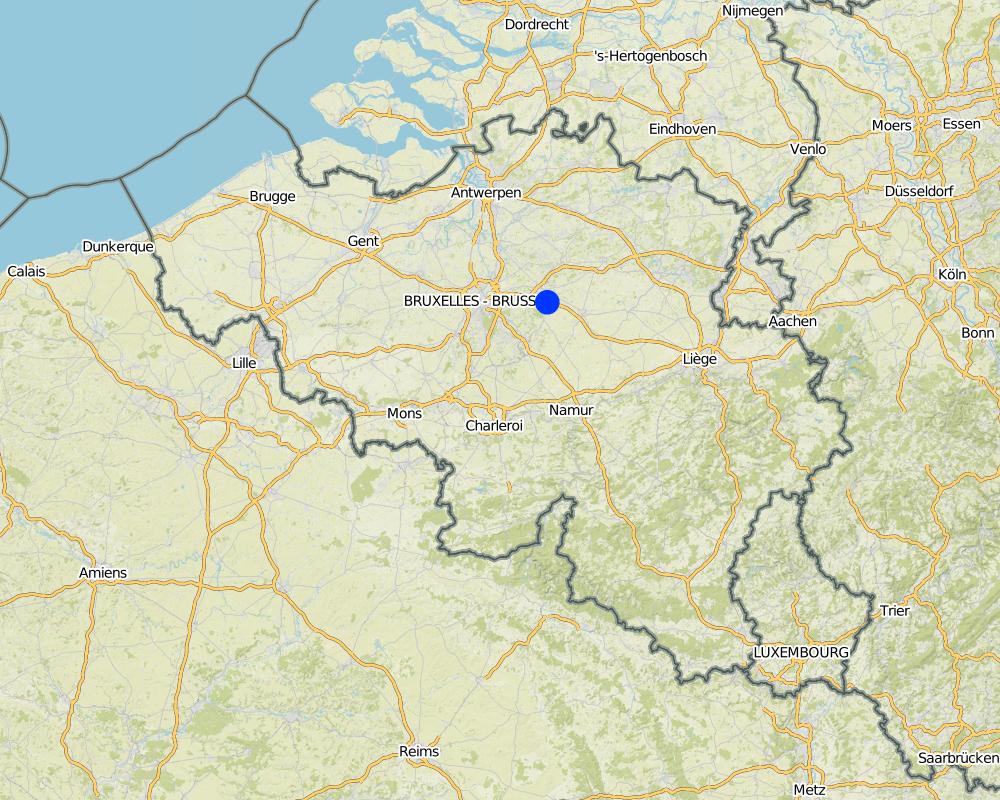Introduction of conservation agriculture in a highly mechanised agricultural system [Belgium]
- Creation:
- Update:
- Compiler: Unknown User
- Editor: –
- Reviewer: Fabian Ottiger
approaches_2556 - Belgium
View sections
Expand all Collapse all1. General information
1.2 Contact details of resource persons and institutions involved in the assessment and documentation of the Approach
Key resource person(s)
SLM specialist:
Gillijns Katleen
Cath. University Leuven
Oude Markt 13, 3000 Leuven
Belgium
SLM specialist:
Govers Gerard
gerard.govers@ees.kuleuven.be
Cath. University Leuven
Belgium
Name of project which facilitated the documentation/ evaluation of the Approach (if relevant)
Soil and water protection (EU-SOWAP)Name of the institution(s) which facilitated the documentation/ evaluation of the Approach (if relevant)
Catholic University of Leuven (KU Leuven) - Belgium1.3 Conditions regarding the use of data documented through WOCAT
The compiler and key resource person(s) accept the conditions regarding the use of data documented through WOCAT:
Ja
1.4 Reference(s) to Questionnaire(s) on SLM Technologies

Non-inversion deep cultivation [Belgium]
The technology consists of the use of cover crops and of a non-inversion seedbed preparation.
- Compiler: Unknown User

Non-inversion shallow cultivation [Belgium]
The technology consists of the use of cover crops and of a non-inversion seedbed preparation
- Compiler: Unknown User
2. Description of the SLM Approach
2.1 Short description of the Approach
Combination of 'dissemination of the SWC technology 'non-inversion tillage'' and research.
2.2 Detailed description of the Approach
Detailed description of the Approach:
Aims / objectives: To demonstrate the feasibility and stimulate the adaption of conservation tillage to the farmers.
Methods: (1) Collection of scientific data on farmer fields (yield and sediment production) and (2)intensive communication and discussion with farmers. Farmers are involved in the early stages of the project: also the local government and SWC specialists are target groups.
Stages of implementation: The project ( & approach) started in 2001. Every year, data is gathered at +- 15 fields of 10 farmers. The majority of the farmers have a positive attitude towards the approach. There is cooperation with other projects and with research institutes in the U.K. and Hungary. (They are working on the same project).
Other important information: Several times a year the information is communicated to other farmers through field visits and media.
2.3 Photos of the Approach
2.5 Country/ region/ locations where the Approach has been applied
Country:
Belgium
Further specification of location:
Flanders
Map
×2.6 Dates of initiation and termination of the Approach
Indicate year of initiation:
2001
Year of termination (if Approach is no longer applied):
2006
2.7 Type of Approach
- project/ programme based
2.8 Main aims/ objectives of the Approach
The Approach focused on SLM only
to overcome the problems listed in QA2.1.3.3 and to demonstrate (see question 2.1.1.2)
The SLM Approach addressed the following problems: Insufficient knwoledge on the SWC technology and their impact on ecology and economy.
2.9 Conditions enabling or hindering implementation of the Technology/ Technologies applied under the Approach
social/ cultural/ religious norms and values
- hindering
fields are not 'clean', lack of knowledge of the technology
Treatment through the SLM Approach: demonstrating the benefits of the SWC technology
availability/ access to financial resources and services
- hindering
benefits can only be seen in the long term, farmers are afraid that the yields will be less
Treatment through the SLM Approach: making a cost-benefit analysis, sharing the risk with the farmer
knowledge about SLM, access to technical support
- hindering
for some operations special machinery is needed
Treatment through the SLM Approach: working together with other farmers with agricultural contractors
3. Participation and roles of stakeholders involved
3.1 Stakeholders involved in the Approach and their roles
- local land users/ local communities
Working land users were mainly men (Most of the farmers in Belgium are men.)
- SLM specialists/ agricultural advisers
- researchers
3.2 Involvement of local land users/ local communities in the different phases of the Approach
| Involvement of local land users/ local communities | Specify who was involved and describe activities | |
|---|---|---|
| initiation/ motivation | none | workshops/seminars; The aims and planning of the project were discussed with a small group of farmers. |
| planning | none | workshops/seminars; idem |
| implementation | none | responsibility for major steps; Farmers were implementing the new SCW technology with advice from researchers. |
| monitoring/ evaluation | none | public meetings; Pro's and contra's of the technology is duscussed with farmers. |
| Research | none | Farmers are informed about the obtained research results. |
3.4 Decision-making on the selection of SLM Technology/ Technologies
Specify who decided on the selection of the Technology/ Technologies to be implemented:
- mainly land users, supported by SLM specialists
Explain:
Decisions on the method of implementing the SLM Technology were made by mainly by land users supported by SLM specialists
4. Technical support, capacity building, and knowledge management
4.1 Capacity building/ training
Was training provided to land users/ other stakeholders?
Ja
Specify who was trained:
- land users
- SWC specialists, planners
Form of training:
- on-the-job
- farmer-to-farmer
- demonstration areas
- public meetings
Subjects covered:
problems of soil erosion - practical issues about new technology.
4.2 Advisory service
Do land users have access to an advisory service?
Ja
4.3 Institution strengthening (organizational development)
Have institutions been established or strengthened through the Approach?
- no
4.4 Monitoring and evaluation
Is monitoring and evaluation part of the Approach?
Ja
Comments:
bio-physical aspects were regular monitored through measurements
technical aspects were ad hoc monitored through observations
economic / production aspects were regular monitored through measurements; indicators
no. of land users involved aspects were ad hoc monitored through measurements
There were no changes in the Approach as a result of monitoring and evaluation
4.5 Research
Was research part of the Approach?
Ja
Specify topics:
- economics / marketing
- ecology
Give further details and indicate who did the research:
Collection of scientific data on farmer yields (yield and sediment production). This information is afterwards communicated to the farmers.
Research was carried out on-farm
5. Financing and external material support
5.1 Annual budget for the SLM component of the Approach
Comments (e.g. main sources of funding/ major donors):
Approach costs were met by the following donors: international (EU-LIFE): 50.0%; other (SYNGENTA): 50.0%
5.3 Subsidies for specific inputs (including labour)
- none
If labour by land users was a substantial input, was it:
- paid in cash
Comments:
Farmers were asked to split up a field: one part was conventional tilled and on the other part the SWC technology was applied. Farmers were paid for the extra work of splitting a field.
5.4 Credit
Was credit provided under the Approach for SLM activities?
Nee
6. Impact analysis and concluding statements
6.1 Impacts of the Approach
Did the Approach help land users to implement and maintain SLM Technologies?
- No
- Yes, little
- Yes, moderately
- Yes, greatly
Less soil is eroded through implementation of the QT.
There are no strong land use rights.
Did other land users / projects adopt the Approach?
- No
- Yes, little
- Yes, moderately
- Yes, greatly
Some other projects in Belgium were setup with the same approach.
6.3 Sustainability of Approach activities
Can the land users sustain what has been implemented through the Approach (without external support)?
- yes
6.4 Strengths/ advantages of the Approach
| Strengths/ advantages/ opportunities in the compiler’s or other key resource person’s view |
|---|
| The combination of scientific research and direct interaction with farmers is a promising strategy to stimulate the adoption of conservation tillage. |
7. References and links
7.1 Methods/ sources of information
- field visits, field surveys
- interviews with land users
7.2 References to available publications
Title, author, year, ISBN:
SOWAP - project 2003-2006
Available from where? Costs?
www.sowap.org
Links and modules
Expand all Collapse allLinks

Non-inversion deep cultivation [Belgium]
The technology consists of the use of cover crops and of a non-inversion seedbed preparation.
- Compiler: Unknown User

Non-inversion shallow cultivation [Belgium]
The technology consists of the use of cover crops and of a non-inversion seedbed preparation
- Compiler: Unknown User
Modules
No modules





